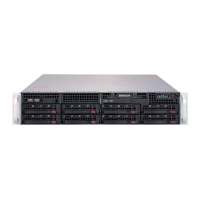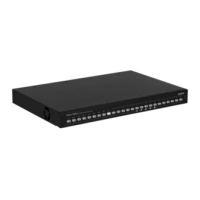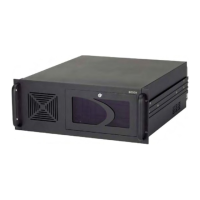Do you have a question about the Bosch DIVAR 3000 and is the answer not in the manual?
Essential guidelines for safe operation and handling of the device, covering warnings and precautions.
Guide to connecting cameras, monitors, network, and other peripherals to the unit.
Steps to safely connect power and turn on the recorder for initial operation.
Guided setup process for initial system configuration after powering up the device.
How to view live camera feeds and navigate the interface after initial setup.
Configuration options for general system behavior, language, date/time, and startup.
Configuring network connectivity, IP addresses, ports, and protocols for remote access.
Configuring camera detection, identification, privacy masks, and PTZ properties.
Defining system responses to events like motion detection, video loss, and input alarms.
Managing hard disk drives, RAID configurations, and recording settings.
Overview of input devices and navigation methods for the unit's interface.
Searching, viewing, and exporting recorded video files from the system.
Steps to access the system remotely using the Web Client software.
| AC input voltage | 100 - 240 V |
|---|---|
| AC input frequency | 50 - 60 Hz |
| Power consumption (max) | 20 W |
| Storage temperature (T-T) | 0 - 93 °C |
| Operating temperature (T-T) | 0 - 40 °C |
| Storage relative humidity (H-H) | 0 - 95 % |
| Operating relative humidity (H-H) | -40 - 70 % |
| Sustainability certificates | RoHS |
| Certification | EMC, LVD, UL, cUL, CAN/CSA, BIS, RCM, ACMA EMC, CE, FCC |
| On/off switch | Yes |
| Product color | Black, Silver |
| Rack capacity | - |
| Bit rate | 24000 Kbit/s |
| Display modes | Live view |
| Playback modes | Fast play, Forward, Frame by Frame, Reverse, Slow play |
| Input bandwidth | 320 Mbit/s |
| Number of users | 128 user(s) |
| Recording modes | Manual, Schedule, Stop |
| Output bandwidth | 256 Mbit/s |
| Maximum resolution | 3840 x 2160 pixels |
| Alarm input channels | 16 |
| Video input channels | 16 channels |
| Alarm output channels | 3 |
| Supported resolutions | 3840×2160, 1920×1080, 1280×1024, 1280×720, 1024×768, 970x576, 704x576, 352x576, 352x288, 176x144, 960x480, 704x480, 352x480, 352x240, 176x120 |
| Video recording modes | 720p, 1080p |
| Video formats supported | H.264, H.265, M-JPEG |
| RS-232 ports | 1 |
| Audio RCA inputs | 4 |
| Networking standards | IEEE 802.3 |
| USB 2.0 ports quantity | USB 2.0 ports have a data transmission speed of 480 Mbps, and are backwards compatible with USB 1.1 ports. You can connect all kinds of peripheral devices to them. |
| Ethernet LAN data rates | 10, 100, 1000 Mbit/s |
| Ethernet LAN (RJ-45) ports | 2 |
| Supported network protocols | HTTP, HTTPS, TCP/IP, IPv4/IPv6, UPnP, RTSP, UDP, SMTP, NTP, DHCP, DNS/DDNS, IP Filter, PPPoE, FTP |
| Copper ethernet cabling technology | 10BASE-T, 100BASE-T, 1000BASE-T |
| Wi-Fi | No |
| HDD capacity | - GB |
| HDD interface | Serial ATA |
| Maximum storage capacity | 6 TB |
| Mobile operating systems supported | Android, iOS |
| Depth | 323 mm |
|---|---|
| Width | 375 mm |
| Height | 53 mm |
| Weight | 4130 g |











